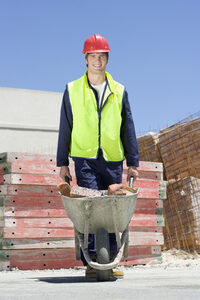 The number of work related injuries, both in the UK and Australia, is quite high. In fact, 2012-2013 saw an estimated 646,000 work related accidents with 1/3 of those leading to three or more missed work days and another 1/3, seven or more missed days. While self-reported non-fatal injuries have fallen, there were 148 deaths related to workplace injury during the same two year period. Clearly, the cost of injury and/or death, as well as missed work time, is high. While these figures represent all industries, we know construction zones are ripe for accident and injury. There are tried and true methods of decreasing costly accidents which also prevent compensation claims.
The number of work related injuries, both in the UK and Australia, is quite high. In fact, 2012-2013 saw an estimated 646,000 work related accidents with 1/3 of those leading to three or more missed work days and another 1/3, seven or more missed days. While self-reported non-fatal injuries have fallen, there were 148 deaths related to workplace injury during the same two year period. Clearly, the cost of injury and/or death, as well as missed work time, is high. While these figures represent all industries, we know construction zones are ripe for accident and injury. There are tried and true methods of decreasing costly accidents which also prevent compensation claims.
Safety Training
One thing we can never neglect is training. There are so many things happening, often at once, in a construction zone; accidents may seem like part of the work day. While most will be harmless or near-miss situations, your goal should be to avoid accidents altogether. In construction zones, you're dealing with a lot of variables. The framing crew might not work under the same direction as the plumbing crew or the electrical crew. Make sure your subcontractors know who to answer to and each member of their team is trained and qualified for the job being done. Have regular meetings with job supervisors keeping everybody informed regarding goals for the day or week. Newly hired employees should train under a mentor similar to being an apprentice.
Equipment
Any and all equipment used should be in good working order. Electrical cords should be free of damage and frays. Tools should be ergonomic when possible, yet practical and safe. Make sure employees use the right tool for the jobs they're doing. Adding 20 minutes to the day by going after the right tool is time better spent than an afternoon in the emergency room followed by several missed work days. Instead of trying to cut corners, cut accident levels.
All personal protective equipment (PPE) should be up to the country’s certified standards and used properly. Proper use is as simple as actually wearing hard hats, gloves, safety glasses, steel toed boots, etc.
Working high
Working at heights is always dangerous. Have well-built scaffolding and good ladders available, making sure both are used correctly. All safety straps should be strong and free of rips and frays.
Working high could also mean working under the influence of drugs or alcohol. If an employee displays signs of working high, remove them at once from the construction site. Random drug and alcohol tests may be used to prevent employees from coming to work under the influence.
Audits
Do regular equipment and safety audits along with random checks. If anything is found lacking, make the necessary correction. People on the construction site will be more likely to use equipment and safety gear properly if they know it matters to the supervisors.
The Public
Since construction zones are often in public places, people not having anything to do with the job whatsoever, are a potential hazard. Besides the possibility of damaging the site itself, people can get seriously hurt or die as a result of roaming around a construction site. Be sure to erect barriers or temporary fencing to the zone and place clear signs warning of danger if crossed. Create a temporary detour if necessary to help people avoid getting hurt.
Running a job from start to finish accident free is certainly a worthy goal. You can come much closer to meeting this goal by making safety a priority in every decision from the top down. When safety precautions are top priority, accidents and compensation claims are rare. It's a win/win situation for everybody.
Author Bio:
Laurie Joyce of Fortress Fencing & Safety Systems has a passion for workplace safety, and sharing his knowledge and experience with others.